Duration: 5:20
Project: Judaica
Song: Ahot Ketana (Greek Jewish Musical Traditions)
Practitioner: Agnieszka Mendel / Nazlıhan Eda Erçin
Director: Nazlıhan Eda Erçin
Videography: Ben Spatz
Date: 24 May 2017
Venue: Centre for Psychophysical Performance Research
Source File: J048
COMMENTARY
Agnieszka
We were about to test this particular constellation of roles for the first time: I bring a song into the space as a practitioner, Eda directs but is in the space with me, Ben stays outside the action, as videographer. The session was supposed to last for 30 minutes.
Eda asked me to close my eyes. She placed my hand on top of hers and gently started to lead me in space. I knew I could trust her and let go of stress that would normally set my mind and body into an alerted mode. I felt the softness and the firmness of the leading hand at the same time. Gradually, as I was getting used to the peculiar feeling we started to behave more freely in the space, changing tempos, directions and vertical axis. I realized that never before I have experienced following someone else’s touch for such a long time. Moreover – having my eyes closed I have never moved my body so profusely. When in certain moment she asked me to introduce to her one of my new songs, one of them flew out of me indeed. The song ‘Ahot Ketana’. Beautiful spellbinding melody but also the first non-secular Jewish song I have introduced into the songwork laboratory space of the Judaica Project. ‘Ahot Ketana’ is a ‘is a pizmon of eight stanzas sung in the Sephardic ritual before the commencement of the Rosh Hashanah evening prayer’ (Wikipedia). ‘These are actually the first words that open the New Year, while the sun is setting’ (Invitation to Piyut). In this song, the Jewish people ‘pray that the old year and its curses end and the new year and its blessings begin’ (Zemirot Database).
Why did this very particular song come out of me? Sung for the first time while blind with my eyes I was following Eda’s soft-touch-leadership, travelling through a wilderness of my own interior. Separated from the visual world of the external world I had all other senses awakened and the song was one of them too, sensing the unknown. That was a reception of a new embodied feeling. That ‘Ahot Ketana’ was a Rosh Hashana piyut, sung by religious Jews to welcome the dawn of a New Year, I only realized later, after the session was done.
But I don’t think that it was a coincidence.
Ben
Agnieszka’s point about bringing nonsecular materials into the laboratory is important. The laboratory is often considered a sacred place and so working with explicitly religious songs can seem even more problematic and reductive than other kinds of music. I am however not sure that the laboratory is inherently secular. If we think of religion as a social structure then it is true that the contemporary university and its laboratories define themselves partly by their break with religion. On the other hand, if we think of religion and spiritual as located also within the body or within the human being, then we cannot exclude them from the embodied laboratory any more than we can exclude the voice or the feet. Recognizing the religious source of a song brings with it a certain kind of responsibility. I am interested in my own experience of singing Jewish sacred songs, which were not a part of my secular Jewish upbringing. I am also interested in how it feels to sing a song that one knows is sacred from another tradition. I agree with Agnieszka that it was not just a coincidence that this song arose during this session, even though she did now know then about its religious function. The work that Eda proposed involved being led with closed eyes through the space. This involves a kind of embodied surrender which can be linked with spiritual surrender (‘Islam’) in prayer. I am not surprised that while experiencing this kind of embodied surrender, the song that arose in her was one which turns out to be a prayer in which the Jewish people are symbolized by ‘a little sister, who must suffer greatly yet remains faithful to her heavenly lover’ (Wikipedia).
Eda
This is the first time I am working in this configuration where I am both directing and physically supporting a practitioner. Being in the space as the director but not the lead practitioner is an intriguing artistic challenge. Which role does precede which one? Director? Practitioner? How and when does a director become an enabler? After giving a short break from the laboratory work and spending a few days back home in Turkey, I use this session to re-find my point of contact with both Agnieszka and the songwork.
The exercise wherein a practitioner leads another who is blindfolded through the touch of their hands was first introduced to me by my dance teacher, Gülüm Pekcan Şimşir at Ankara Sanat Tiyatrosu / Ankara Art Theatre in 2004. She used it as a tool for improvisational choreography by focusing on the question of trust and flow between performer partners. Since then I have been reintroduced variations of the exercise by other practitioners, including Alison Hodge and Helen Poynor, and practiced it with my collaborators and students as an exploration of tactile contact and bodily boundaries in co-creation. In this session, what I am particularly interested in is the relationship between subtlety and strength in relation to songwork. What is powerful about softness and how can softness be searched in songwork as a material starting point?
As the exercise progresses, I give verbal instructions to Agnieszka to relax her shoulders, arms and let go. As she holds my hand firmly, I tell her to allow her hand rest on mine without holding it. How can we work with each other’s proposals without pushing them? Can subtle action be forceful? While I am tacking with all these questions in mind, I ask Agnieszka to introduce a new song to me. Through my hand, I try to guide her movement and voice always in relation to my presence in the space. This is the first time I am hearing this song. Yet, I feel like I have always known this melody. I have no idea what it means and have no interest in knowing what it verbally says at that moment. On the contrary, not knowing the song’s meaning and the context allows me to focus on my contact with Agnieszka and observe the song becoming a part of it. The exploration of tactile contact in creative action is an ongoing research within songwork which I continue proposing in our subsequent work. (See ‘back to back transmission’ and ‘entering a song through physical contact’.)


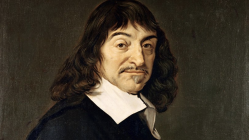
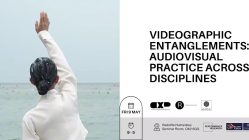
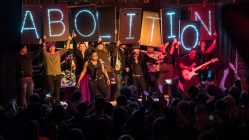
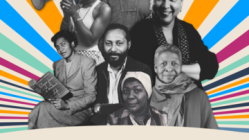
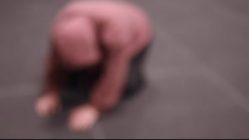
[…] May 2017 following through touch rhythmic […]